The future may be much better, or worse, than most people think. It’s going to “arrive” sooner than they imagine.
Ray Kurzweil – explains “Now back to the future: it’s widely misunderstood. Our forebears expected the future to be pretty much like their present, which had been pretty much like their past. Although exponential trends did exist a thousand years ago, they were at that very early stage where an exponential trend is so flat that it looks like no trend at all. So their lack of expectations was largely fulfilled. … An analysis of the history of technology shows that technological change is exponential, contrary to the common-sense “intuitive linear” view. So we won’t experience 100 years of progress in the 21st century — it will be more like 20,000 years of progress (at today’s rate). The “returns,” such as chip speed and cost-effectiveness, also increase exponentially. There’s even exponential growth in the rate of exponential growth.”
Michael Bess, professor of history at Vanderbilt University in the United States, opines “There will be some fantastic benefits from these technologies, and some really potentially cataclysmic dangers. The idea is to go slow, because we need to be careful. We need to give ourselves time to adapt to the power that these changes are going to exert on our life as individuals and in society as a whole. .. Within the wealthy countries, it could exacerbate the rift between the rich and the poor. On a global scale, it’s going to be even worse. I become worried that over time, if there are several generations of enhancements that have gone forward and that rift keeps widening, you will see a fragmentation of the species based on whether they have been able to get access to these things or not.”
The Third Industrial Revolution.
David Brown, entrepreneur, angel investor and the creator of the blockbuster drug Viagra, suggests that we are living through what he calls the Third Industrial Revolution. His theory is that each revolution is driven by a combination of three things:
- a new energy source, 1, coal, 2.oil, 3. ?solar..
- a new means of communication. 1. steam-powered printing press 2.the telegraph 3. ?the internet.
- and a new source of finance. 1. the stock exchange. 2. the limited company 3. ? peer-to-peer lending and other internet-driven forms of finance.
… What’s the definition of a bank? It lends money to a broad customer base. These internet companies have massive customer bases – a billion customers with no infrastructure costs – and they’ve got money. Apple’s got $200 billion in cash. Banks are bust! It just takes one step now: for Apple and Google to start lending, and they are then replacing the current banking system.
Genetic editing
We’re talking about memory in the way early computer developers (really early – think 1940s) had to find ways of turning information into a signal that could be read, understood and stored by a machine. In a similar vein, researchers have found a way of getting the DNA in your cells to record certain information that can then be read back later.
Medically, that information is basic: we can record “events”, like whether any inflammation occurred, as well as for how long it lasted and how severe it was. But the ultimate goal of the research is to get our DNA to store more complex information about the progression of an illness or the performance of a drug.
As Timothy Lu, associate professor of electrical engineering and computer science, and of biological engineering, put it: “To enable a deeper understanding of biology, we engineered human cells that are able to report on their own history based on genetically encoded recorders.”
This breakthrough, like so many others, would not have been possible without CRISPR.
First off, what exactly is CRISPR? It stands for Clustered Regularly Interspaced Short Palindromic Repeats. It’s sometimes referred to as CRISPR/Cas9. But what we call it isn’t half as interesting as the fact that it enables us to do something no civilisation before us has ever had the ability to do – to edit the genetic makeup of living things and remake ourselves the way we want to be. It will go down in history as the most significant breakthrough of the century.
In the middle of the last (20th) century, Francis Crick and James Watson , at Cambridge, discovered the structure of DNA. Let’s call that the birth of modern genetic research. It was akin to us finding the instruction manual for the human body. A half a century later in 2000 and the Human Genome Project decoded a genome for the very first time. That gave us the ability to read the instruction manual (or parts of it).
CRISPR enables us is to rewrite the book altogether – to cross out parts we don’t want, swap whole pages with those of another book, to create an entirely new book if we like. That’s a major shift. It changes our involvement from passive study and understanding of the subject, to active involvement, re-engineering things the way we want them to be. It is an emerging technology. But its uses are multiplying seemingly by the day. The doctor behind the experiment called it: “A landmark in the use of new gene engineering technology and the effects on this child have been staggering. “If replicated, it could represent a huge step forward in treating leukaemia and other cancers.”
“CRISPR is a geneticist’s dream come true,” said oncology expert and Novartis researcher Rob McDonald in a 2016 interview. “CRISPR enables us to do experiments that one could only dream of before.” In short, it enables scientists to look into thousands of genes related to cancer. The goal is to find a “kill switch” – the gene or genes that are vital to the survival of the cancer. Find this and you can engineer drugs that hit this target with precision.” This has helped lead to a major project lead by the Novartis Institutes for BioMedical Research (NIBR) and the Broad Institute of MIT and Harvard, known as the Cancer Cell Line Encyclopaedia. The goal is to turn genomic information of cancer data and tumour biology into more therapeutically useful information.
That tackles a disease that’s already developed in a patient. But what if we could remake our genetic profiles so that we were entirely immune to certain diseases? In an attempt to create immunity against HIV by “cutting” the offending genetic material away UMass Medical School researchers are using CRISPR/Cas9. “On the simplest level, we’re employing a very precise pair of scissors to go in and clip out all, or part of, the HIV genome and reattach the severed ends of the human genome,” said principal co-investigator Scot Wolfe, PhD, associate professor of molecular, cell & cancer biology. “If we could do that, the hope is that this would be a step on the road to getting a functional cure for HIV.”
The number of clinical uses of CRISPR – and gene editing more widely – is growing all the time. As well as cancer and HIV, researchers around the world have had preliminary success using CRISPR against cystic fibrosis and sickle cell anaemia.
There are more controversial uses, such as creating mosquitos that are genetically engineered to wipe out the rest of their species (by breeding with them only to have offspring that are incapable of breeding) in an effort to combat malaria and the Zika virus.
Superhumans and the Jetsons fallacy
The author Michael Bess put it that when we imagine the future, we envisage a world in which technology is many times more advanced, but humans are essentially the same as they are today. He calls it the “Jetsons fallacy”: based on a TV show set in the year 2062. It became a household show. Everyone was watching it. And it depicted a world in the future where cars fly and people can be transported in pneumatic tubes and there are robots everywhere, but the people are exactly the same as the people of 1962.
Consider the other side of the debate? What about using these techniques to enhance healthy people, rather than treat or prevent disease? Given the potential uses of CRISPR and other genetic editing techniques in the treatment or prevention of illness, it seems near certain that gene editing will become a major industry – and perhaps even a major part of life. It is easier to win the moral argument against altering the building blocks of life if you’ve developed a cure for cancer or heart disease. The benefits to humanity are obvious and immediate.
There’s been a line drawn in the sand between the two uses so far. Marcy Darnovsky of the Centre for Genetics and Society (an organisation dedicated to looking at human biotechnologies from a social justice, human rights and public interest perspective), who put it like this: ‘When someone has a disease that’s threatening their life or their health, then yes, let’s try to treat them with gene therapy. But when it comes to modifying genes that we’re going to pass onto our children and to every cell in their bodies, and that’s irreversible, and that’s going to be passed on to all their offspring: that’s where we think the line has to be drawn’.
The line has been drawn many countries and by one international treaty – the Council of Europe treaty that the UK has not signed. The UK itself actually does have a national law against human germline modification, which is why Parliament had to vote on that mitochondrial manipulation technique.
Sarah Gray, of the American Association of Tissue Banks, made that same point in a more emotional, but no less relevant, way. Gray gave birth to a son with anencephaly and suffered seizures for six days until he died. As she told a National Academy of Sciences summit on gene editing, “If you have the skills and the knowledge to eliminate these diseases, then freakin’ do it.”
As these technologies advance, they will make it possible to safely and effectively modify the DNA of human embryos genetically. This is a choice we are going to have to make. Is this something we want to do or not? Because it’s going to become technologically and medically possible.
We have a technology that allows us to remake the world ourselves as we want – or think we want – it to be. The potential uses are virtually limitless. That creates a massive incentive to explore and push the limits of what we’re able to do. How to use that power is going to be the most important story of the century.
The Artificial Intelligence Revolution has begun
A time in human history. when we eradicate killer diseases, add decades to the average human lifespan and when we master the art of creating machines capable of superintelligent levels of thought and skill, there’s one revolutionary breakthrough that’s going to be at the heart of almost everything that happens – the development of artificial intelligence (AI).
- Energy technology: wind, tidal and PV generation, batteries and fuel cells.
- Consumer technology such as smart appliances, plug-in electric vehicles and social networks.
- Grid and operational technology – such as automated demand side response, microgrids and condition-based predictive maintenance
- Information technology (IT) such as the Internet of Things, cloud, and big data.
Assistive technology
Robotics will actually improve our lives in a huge number of different ways. It isn’t just the branch of technology that will ultimately put millions out of work as every job on the planet gets automated. There are two categories
- Robotics that will assist us: to help us do things our bodies just can’t or won’t do. For instance, helping paraplegic people to walk again. The Walk Again Project in Brazil announced that they’d helped eight paraplegic people to walk again using a combination of virtual reality, robotic exoskeletons and brain-computer interfaces.
- The second category is technology that enhances our abilities, using technology to help us do things we otherwise wouldn’t have been able to do. Robots are already in our factories, increasingly in our homes and providing us with entertainment.
Robotics
In the 2nd category, while the vast majority of uses are peacefully mundane, robots can be used as military tools.The USA’s Defense Advanced Research Projects Agency (DARPA) wants to have suits would allow soldiers to walk further, carry more equipment, offer protection from the elements and allow them to arrive less fatigued. It is easy to imagine this projected into, to me, inapproptiate superhuman soldier or killer robots.
Daewoo is experimenting with a powered suit for its shipyard workers that allows them to lift a 30kg piece of iron with ease. In a shipyard where that kind of activity is mundane, there are obvious advantages to pairing the sensitivity of a human with the brawn of a robot.
In the aftermath of the Fukushima nuclear disaster several Japanese robotics firms developed special exoskeleton suits to enable people to reach otherwise inaccessible places.
Sam Volkering – futurist and financial advisor – “
It’s going to effectively change the structure of social groups, in that our definition of work is currently: you get up, you go to work, spend your day at work, come home. In the last 50-odd years robotics has replaced a lot of labour-intensive roles. You see it a lot in manufacturing now: manufacturing plants use a lot of stationary robotics.
We’re now seeing a trend where robots or automated systems are starting to eat their way into middle-class jobs. You’ve got robo-advisors providing financial recommendations based on a huge amount of data input. So any kind of job that requires a bit of muscle power, or any reasonably repetitive work like bookkeeping – they’re just going to be replaced by automated systems or robotics. Things like self-driving cars – taxis, truck drivers, bus drivers – are not going to be needed, because why get a human to do a job that you can get a robot to do more safely, more reliably, and more consistently over a long period of time and at ultimately lesser cost?
That’s going to create more creative, highly skilled jobs, and jobs that perhaps don’t exist today that no one can predict. It’s going to be a shift of what we know as work. You might end up with three or four jobs on the go. There’s no such thing as a career anymore. You end up with several jobs as your work – micro-work.
That’s going to mean a shift of where people go physically to work, and how they interact and communicate with each other on a daily basis. It’s not going to be about getting up and going to the office, then going home. You might get up, go to a hub somewhere, interact with a bunch of people on one of your jobs. Then work from home for a couple of hours and then have to go to another community set. That’s going to create issues with transport and things like that.
Work is such an important part of our social fabric that when there’s a big shift in what it looks like, it’s going to create a lot of ancillary fluctuations in infrastructure: where we go, energy usage in various locations, etc.
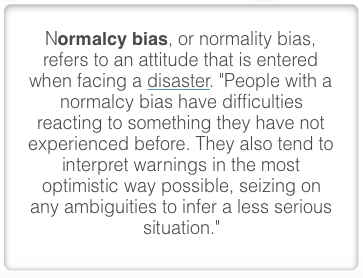 People don’t like change, so that’s going to cause a lot of problems. You’re going to find a lot of people ending up out of work who haven’t had the foresight to reskill or retrain. It’s going to put a strain on economies, because they’re not going to be able to handle these people out of work, and there’s going to be a shortage of people needed for the high-skilled jobs that this change is going to create.”
People don’t like change, so that’s going to cause a lot of problems. You’re going to find a lot of people ending up out of work who haven’t had the foresight to reskill or retrain. It’s going to put a strain on economies, because they’re not going to be able to handle these people out of work, and there’s going to be a shortage of people needed for the high-skilled jobs that this change is going to create.”
The OFFICE OF THE FUTURE (and maybe ‘near future’).
2018. Sam Volkering – futurist and financial advisor – “In the last 50-odd years robotics has replaced a lot of labour-intensive roles. You see it a lot in manufacturing now: manufacturing plants use a lot of stationary robotics. … automated systems are starting to eat their way into middle-class jobs. You’ve got robo-advisors providing financial recommendations based on a huge amount of data input. That’s going to create more creative, highly skilled jobs, and jobs that perhaps don’t exist today that no one can predict. It’s going to be a shift of what we know as work. You might end up with three or four jobs on the go. There’s no such thing as a career anymore. You end up with several jobs as your work – micro-work.
That’s going to mean a shift of where people go physically to work, and how they interact and communicate with each other on a daily basis. Work is such an important part of our social fabric that when there’s a big shift in what it looks like, it’s going to create a lot of ancillary fluctuations in infrastructure: where we go, energy usage in various locations, etc. … It’s going to put a strain on economies, because they’re not going to be able to handle these people out of work, and there’s going to be a shortage of people needed for the high-skilled jobs that this change is going to create.”
(Quoted via Nick O’Connor (Publisher, Exponential Investor and recently published in his book … .
If interested, a personal view of the future can be seen at The Global Future? →… Largely based on the research of Nick O’Connor. .
Alternatively
For another view – Should chairs be banned? See workchairs-a-new-breed-
Suggested by the interdisciplinary Dutch studio RAAAF (Rietveld Architecture-Art-Affordances) and lies at the crossroads of architecture, visual art and philosophy. In our society almost the entirety of our surroundings have been designed for sitting. Evidence from medical research suggests that prolonged sitting results in serious health deficits. These are so widely studied and well-documented that they’re impossible to ignore and show that sitting increases lower back pain, slows our metabolisms, and shortens our life-spans, amongst other things. Not even daily exercise is enough to offset the damage.
Redesigning the workplace environment and home might manipulate an impact on sedentary behavior. Their installations are mostly conceptual. But they bring up an interesting idea: What if chairs were eliminated altogether? Is that even possible? And would that solve work and societal sitting problems or just open up the door to new problems?
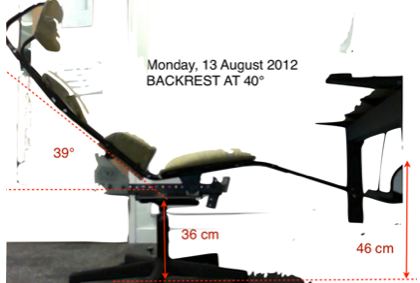
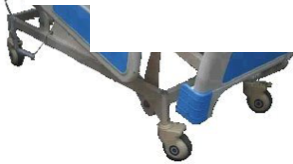 The Ankit model has a simpler base. It is possible to incorporate a hinge mechanism onto this sort of 4 wheel base to support the functional carcass.
The Ankit model has a simpler base. It is possible to incorporate a hinge mechanism onto this sort of 4 wheel base to support the functional carcass. 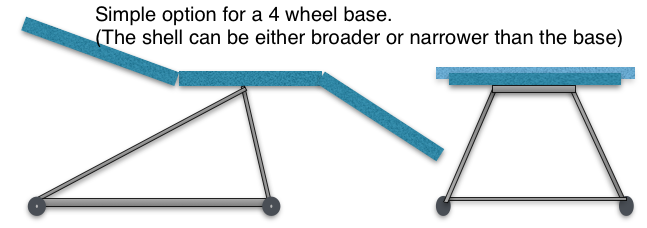

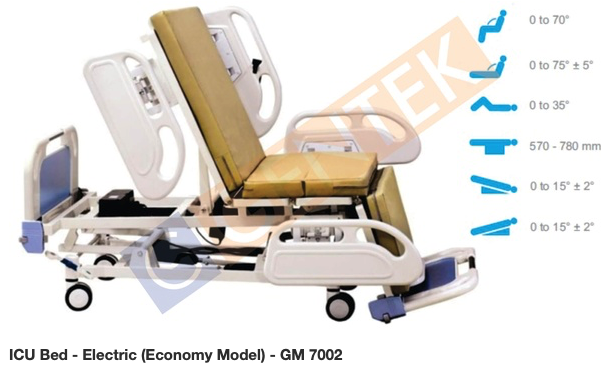
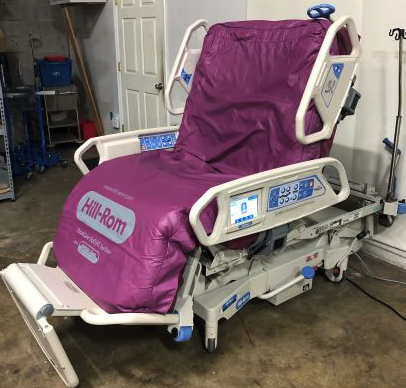
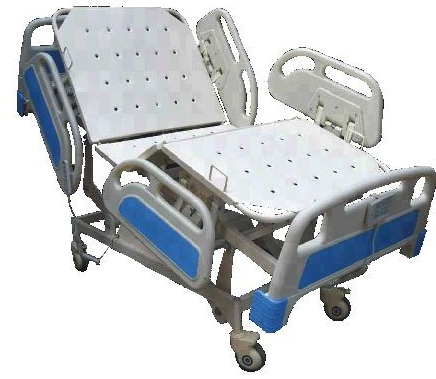 Ankit
Ankit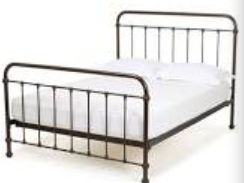 A simple hospital bed.
A simple hospital bed.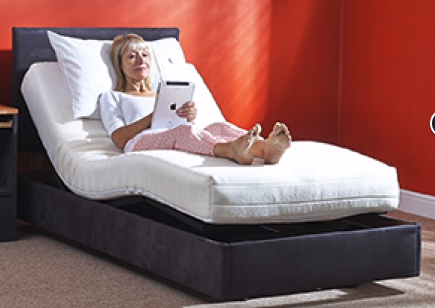
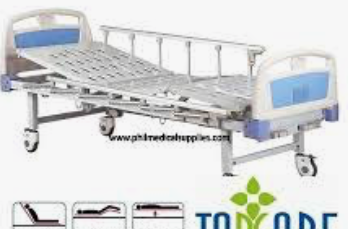 reading and cleaning.
reading and cleaning.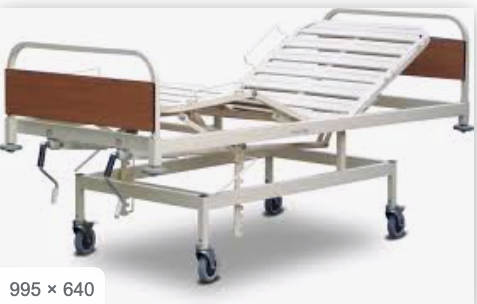 the calf,
the calf,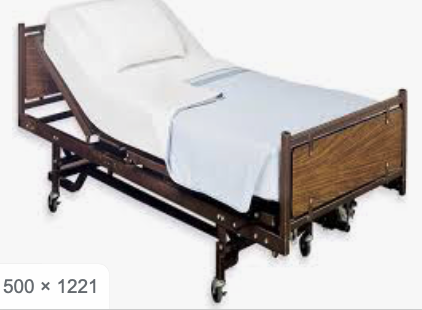 Adjustable head-rest, foot-rest and leg-raise would be integral.
Adjustable head-rest, foot-rest and leg-raise would be integral.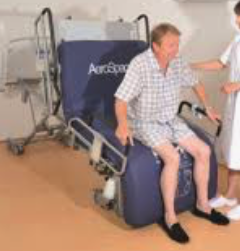
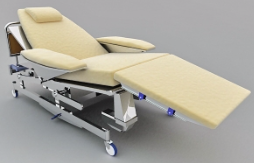
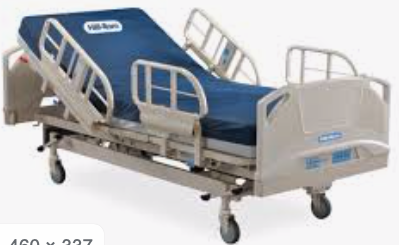 It can be seen that a 2T version has the potential to be a major advance on most of these in cost, versatility and comfort.
It can be seen that a 2T version has the potential to be a major advance on most of these in cost, versatility and comfort. 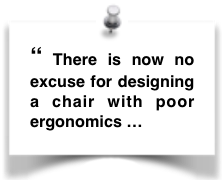 the home have been rather ignored as their ergonomics are unimportant compared to chairs required for prolonged work. Since looking at chairs from a
the home have been rather ignored as their ergonomics are unimportant compared to chairs required for prolonged work. Since looking at chairs from a 
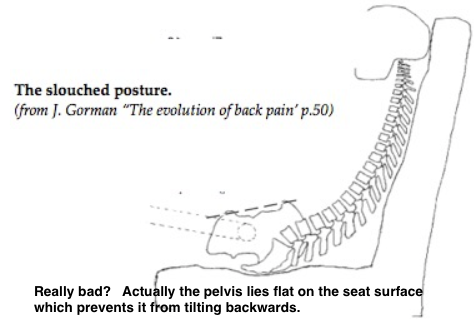
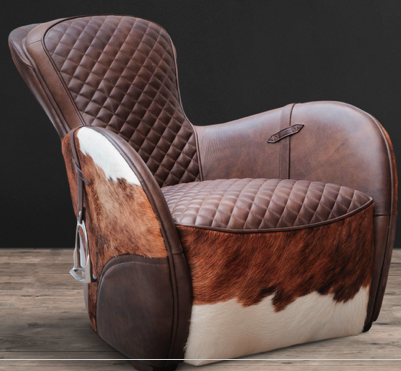 The ‘Saddle Chair’ by Timothy Oulton, at his fantastic new premises in the old Bluebird workshop in the Kings Road, caught my eye. It is almost reclined
The ‘Saddle Chair’ by Timothy Oulton, at his fantastic new premises in the old Bluebird workshop in the Kings Road, caught my eye. It is almost reclined 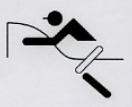 with no other concern for ergonomics. Still on an equestrian theme,
with no other concern for ergonomics. Still on an equestrian theme, 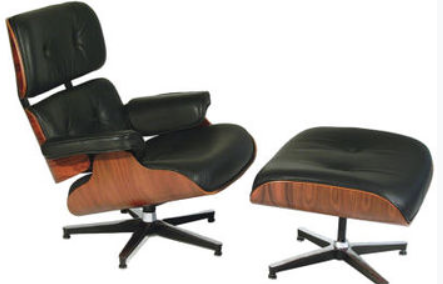 when there is a one- piece solution which could be more elegant, simpler and to the contemporary taste using the 2T (3M) concept. Being more ergonomically compliant it would also be even more comfortable.
when there is a one- piece solution which could be more elegant, simpler and to the contemporary taste using the 2T (3M) concept. Being more ergonomically compliant it would also be even more comfortable.
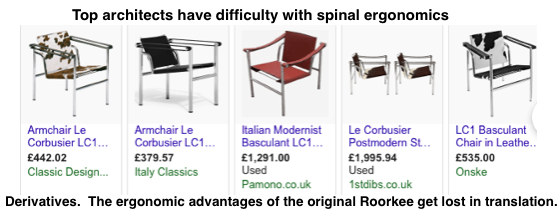
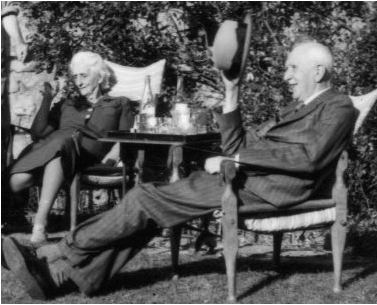 The pair from my Uncle Jack (Berrington) during the South African Boer War (c. 1902) was lost in transit so he indented for two more.
The pair from my Uncle Jack (Berrington) during the South African Boer War (c. 1902) was lost in transit so he indented for two more.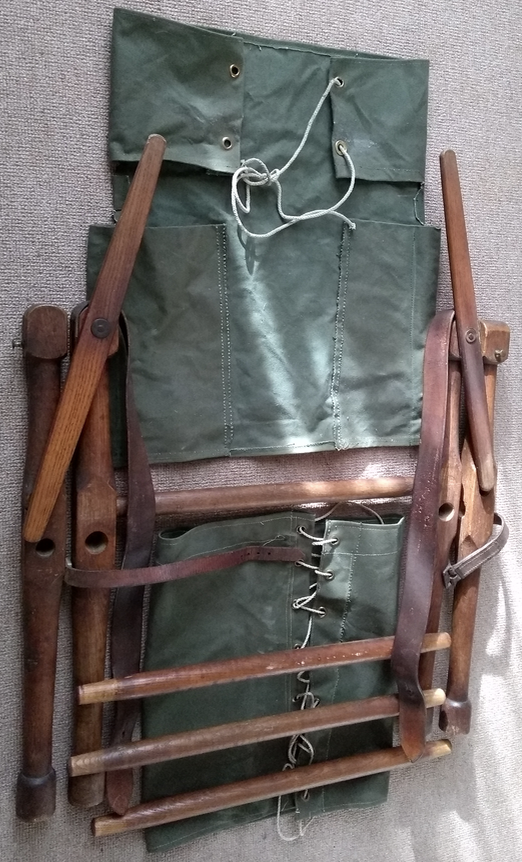
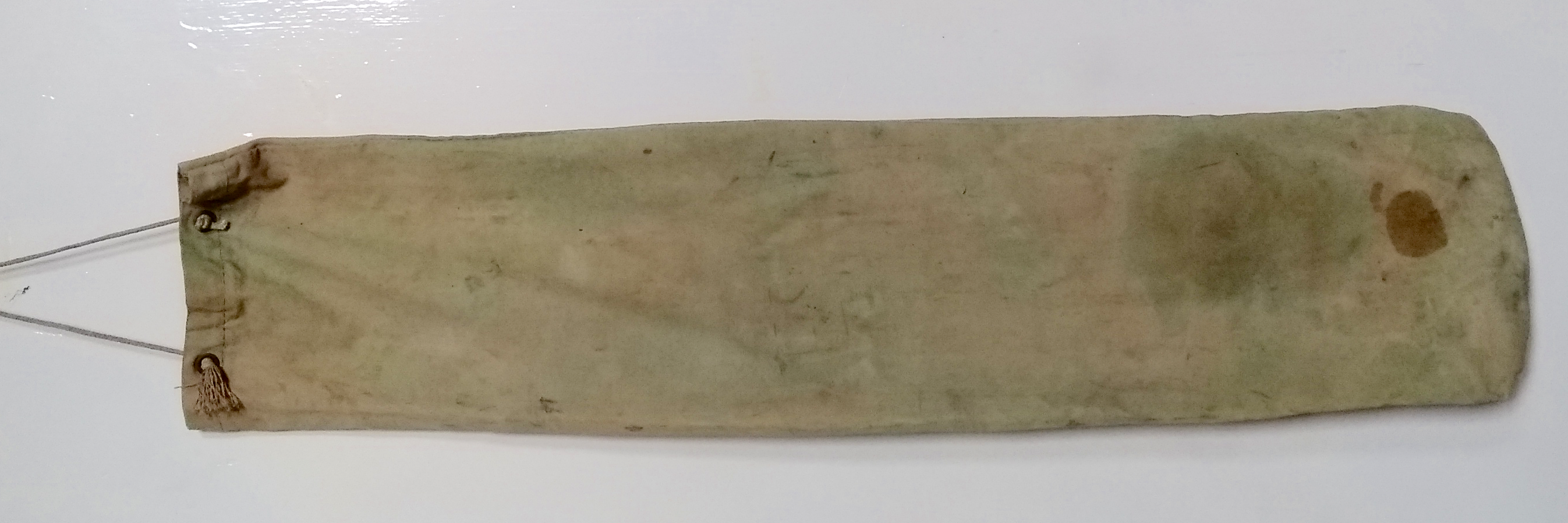 bag. The original bag 90 x 23 cm.
bag. The original bag 90 x 23 cm.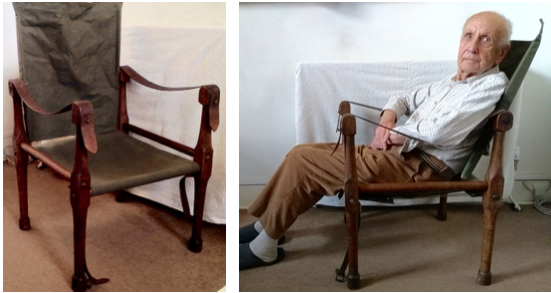
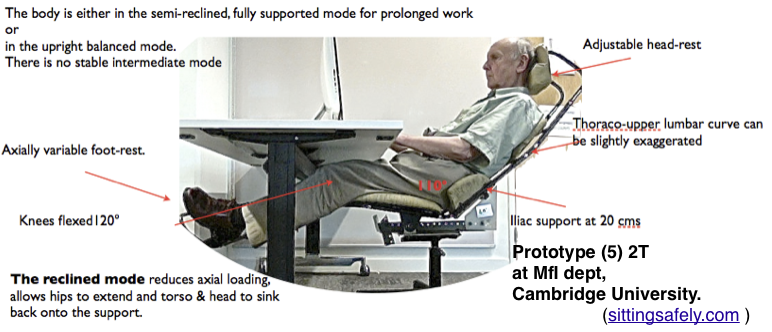
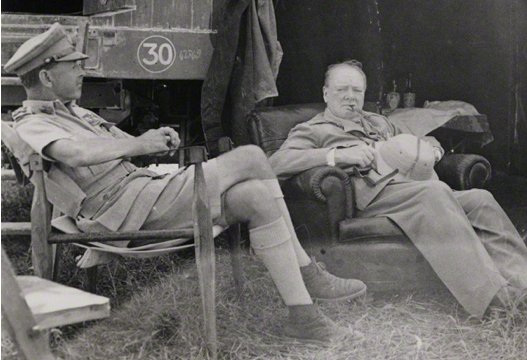
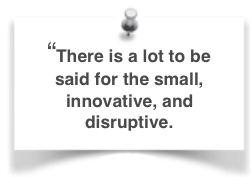

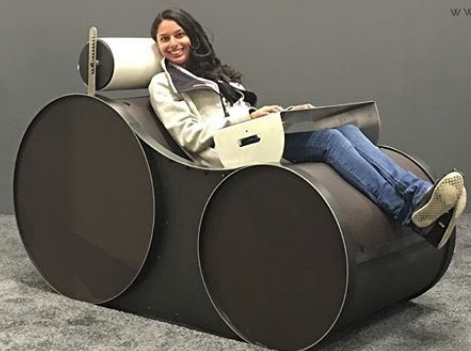
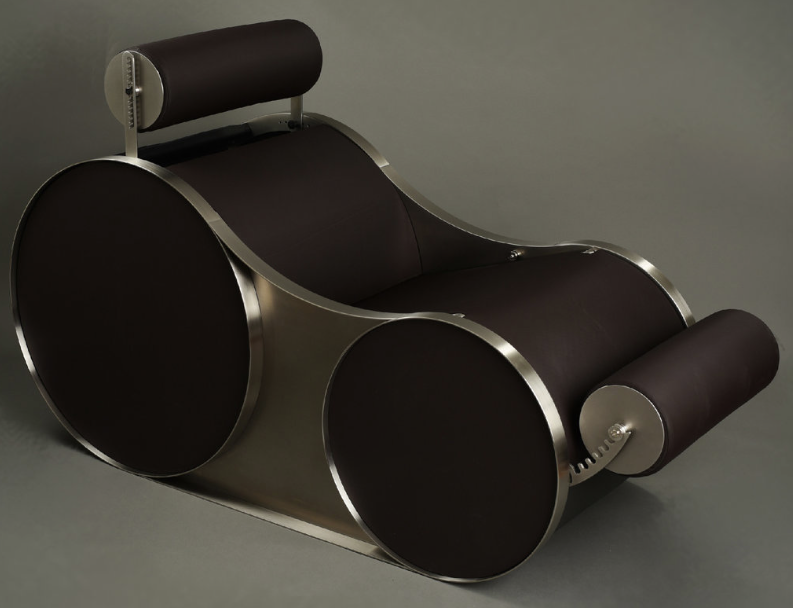
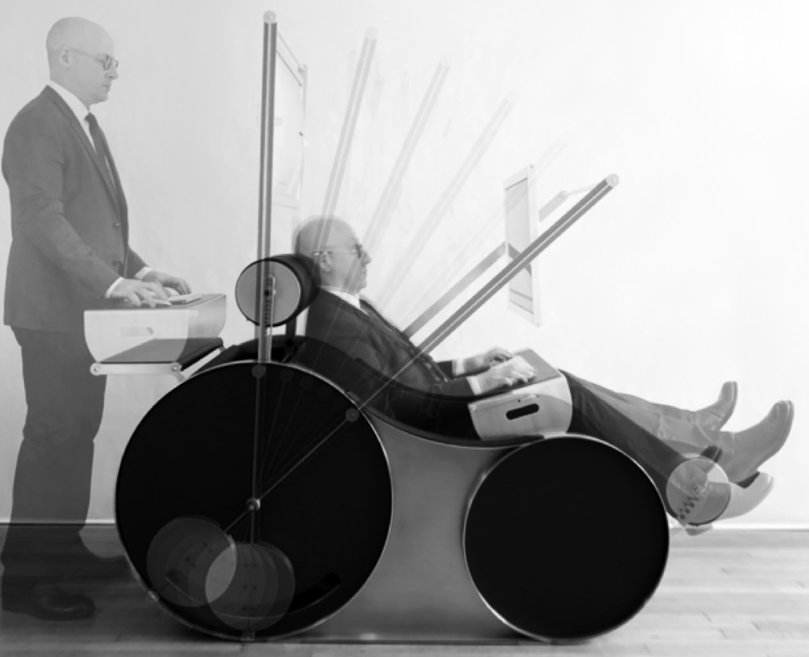 user. If paired with a laptop, the PDI can also be used as a dual-screen interface in both the seated or standing position. With the PDI in the default standup desk position, the Chotto simultaneously accommodates both a standing and seated user – all within a small 15 s.f. footprint.”
user. If paired with a laptop, the PDI can also be used as a dual-screen interface in both the seated or standing position. With the PDI in the default standup desk position, the Chotto simultaneously accommodates both a standing and seated user – all within a small 15 s.f. footprint.”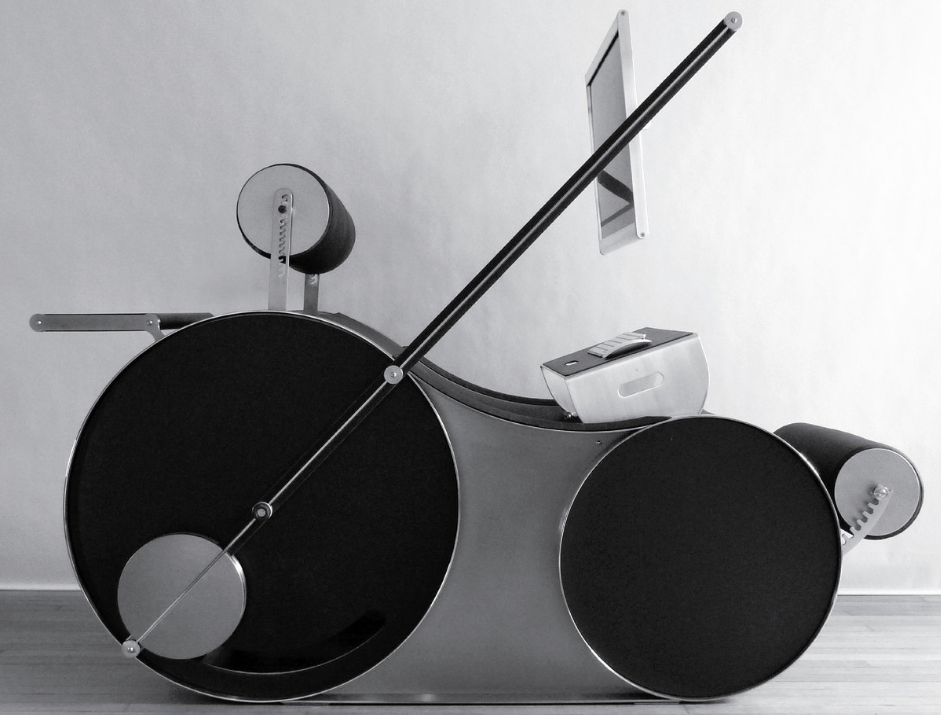
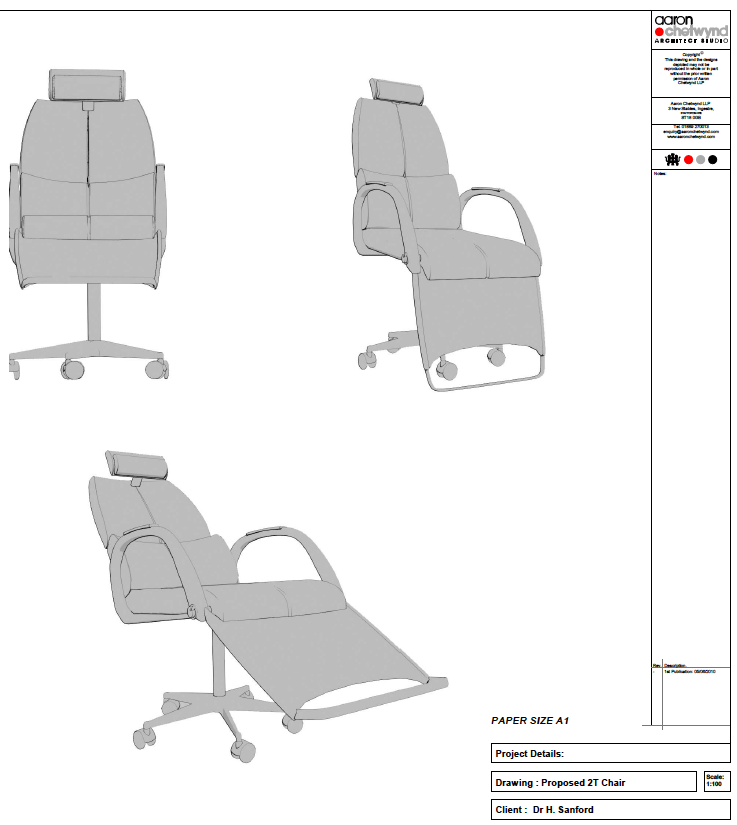 Architects have a tradition for designing good furniture. Aaron Chetwynd did this 2T sketch for me. It is deliberately ‘office chair’ looking to reduce ‘familiarity bias’. It is not intended to be a work-station.
Architects have a tradition for designing good furniture. Aaron Chetwynd did this 2T sketch for me. It is deliberately ‘office chair’ looking to reduce ‘familiarity bias’. It is not intended to be a work-station.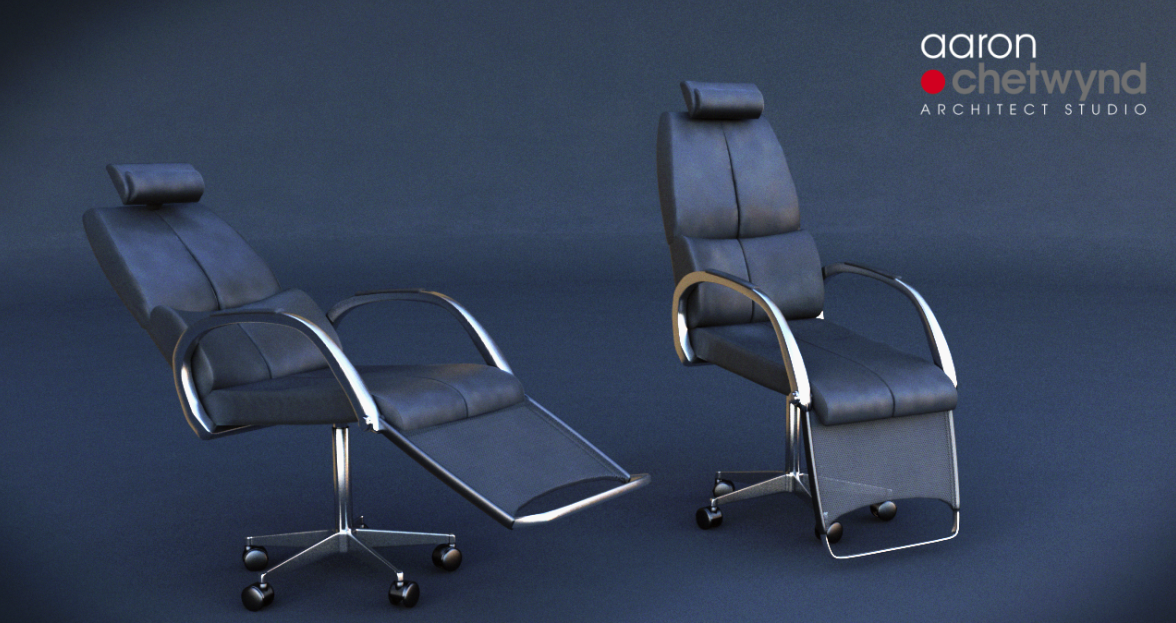
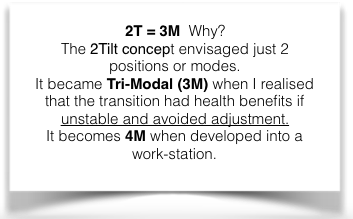
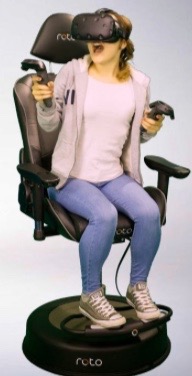
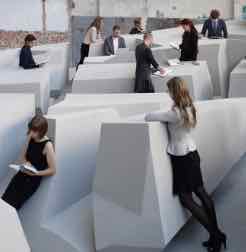 architectural art instalation made in Looiersgracht 60, Amsterdam by RAAAF. It is cut out of the landscape of standing affordances and includes the most successful positions for supported standing. It allows visitors to stand, lean, hang or lay down while interacting, reading or working. The visitor is both participant and spectator. This travelling exhibition allows everyone to experience the future of the standing office.
architectural art instalation made in Looiersgracht 60, Amsterdam by RAAAF. It is cut out of the landscape of standing affordances and includes the most successful positions for supported standing. It allows visitors to stand, lean, hang or lay down while interacting, reading or working. The visitor is both participant and spectator. This travelling exhibition allows everyone to experience the future of the standing office.

